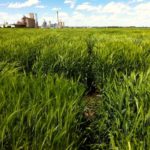There sure seems to be a lot of hype about climate change lately. I’m not a scientist but as a producer, a change in weather can affect my business a great deal. The big push seems to be about reducing emissions and removing carbon from the atmosphere. Everyone is blaming everyone else about putting too […] Read more












